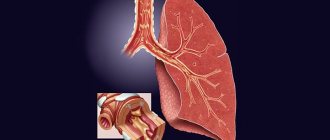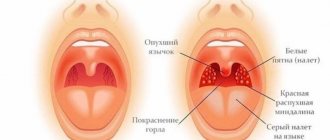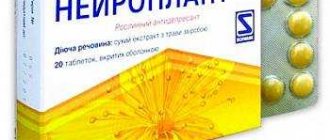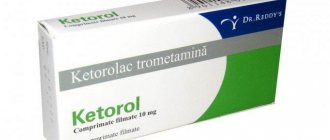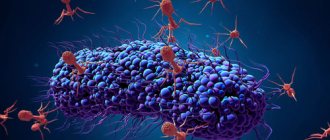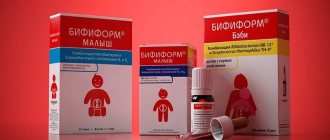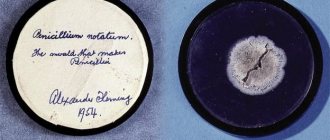Macrolides are a group of antibacterial drugs whose structure is based on a macrocyclic lactone ring. Due to their ability to disrupt the formation of bacterial proteins, macrolide antibiotics stop their vital activity. In high dosages, the drugs completely destroy microorganisms.
Antibiotics from the macrolide group are active against:
- gram-positive bacteria (streptococci, staphylococci, mycobacteria, etc.);
- gram-negative bacilli (enterobacteriaceae, Helicobacter pylori, Haemophilus influenzae, etc.);
- intracellular microorganisms (moraxella, legionella, mycoplasma, chlamydia, etc.).
The action of macrolides is mainly aimed at the treatment of infectious diseases of the respiratory tract due to atypical and gram-positive pathogens.
Historical reference
The first representative of this class of antibiotics was Erythromycin, obtained from soil bacteria in the middle of the last century. As a result of research activities, it was discovered that the basis of the chemical structure of the drug is a lactone macrocyclic ring to which carbon atoms are attached; this feature determined the name of the entire group.
The new drug almost immediately gained wide popularity; it was used in the fight against diseases caused by gram-positive bacteria. Three years later, the list of macrolides was supplemented with Oleandomycin and Spiramycin.
The development of the next generations of antibiotics in this series was due to the discovery of the activity of early drugs of the group against campylobacteria, chlamydia and mycoplasmas.
Today, almost 70 years after their discovery, Erythromycin and Spiramycin are still present in therapeutic regimens. In modern medicine, the first of these drugs is more often used as the drug of choice in patients with individual intolerance to penicillins, the second is used as a highly effective drug characterized by a long-term antibacterial effect and the absence of terratogenic effects.
Oleandomycin is used much less frequently: many experts consider this antibiotic to be obsolete.
There are currently three generations of macrolides, and research into the properties of the drugs continues.
How to take macrolides?
Let's look at them in more detail:
- Do not self-medicate and follow the recommendations of your doctor.
- Strictly follow the dosage of the drug.
- During the therapeutic course, refrain from drinking alcoholic beverages.
- Take the medicine one hour before meals or two hours after meals.
- The tablets should be taken with plenty of water (at least a glass per dose).
To avoid the development of possible side effects and achieve the most favorable results, when treating with macrolides, patients are advised to follow certain rules regarding the use of medications.
Macrolide antibiotics
They have a wide spectrum of action, are convenient in dosage - it is enough to take three doses and have few side effects.
These antibiotics, popularly called macrolides
, have been known for 40 years (their oldest representative is erythromycin, which is still popular today), but only after changing their chemical structure was it possible to create a drug that better penetrates diseased tissues.
Principles of systematization
The classification of drugs included in the described group of antibiotics is based on the chemical structure, method of preparation, duration of exposure and generation of the drug.
Details about the distribution of drugs are in the table below.
| Number of carbon atoms attached | ||
| 14 | 15 | 16 |
| Oleandomycin, Dirithromycin, Clarithromycin, Erythromycin. | Azithromycin | Roxithromycin, Josamycin, Midecamycin, Spiromycin. |
| Length of therapeutic effect | ||
| short | average | long-term |
| Roxithromycin, Spiramycin, Erythromycin. | Flurithromycin (not registered in our country), Clarithromycin. | Dirithromycin, Azithromycin. |
| Generation | ||
| first | second | third |
| Erythromycin, Oleandomycin. | Spiramycin, Roxithromycin, Clarithromycin. | Azithromycin, Zatrin, Zomax. |
This classification should be supplemented with three points:
The list of drugs in the group includes Tacrolimus, a medication that has 23 atoms in its structure and at the same time belongs to the immunosuppressants and to the series under consideration.
The structure of Azithromycin includes a nitrogen atom, so the drug is an azalide. Macrolide antibiotics have both natural and semi-synthetic origin.
Natural medications, in addition to those already indicated in the historical reference, include Midecamycin and Josamycin, artificially synthesized medications include Azithromycin, Clarithromycin, Roxithromycin, etc. Prodrugs that have a slightly modified structure are distinguished from the general group:
- esters of Erythromycin and Oleandomycin, their salts (propionyl, troleandomycin, phosphate, hydrochloride),
- salts of esters of the first representative of a number of macrolides (estolate, acystrate),
- Midekamycin salts (Myocamycin).
Types of macrolides and their effectiveness
Today, specialists know 2 main groups of these antibiotics - natural and semi-synthetic. The former are obtained by processing natural raw materials, the latter - by artificially producing new components. In addition, depending on the chemical structure, 14-, 15- and 16-membered antibiotics are distinguished, which have their own characteristics.
| Subgroup | Features and Efficiency |
| 14-member | These drugs appeared first and were derived naturally. The first was Erythromycin, after which Clarithromycin and Roxithromycin appeared. The agents are considered very effective against many gram-positive and gram-negative cocci. However, over the decades, some microorganisms have become resistant to this subgroup of macrolides, making them less effective. |
| 15-member | This group includes Azithromycin and all products that contain it as an active ingredient, for example, Azitral, Sumamed. There are no antibiotics of natural origin in the subgroup, only synthetic agents. Azithromycin-based drugs are considered very effective; they help eliminate the signs of the most common inflammatory diseases of internal organs by destroying their causative agents. |
| 16-member | The most effective drugs with a low degree of toxicity. This subgroup includes Josamycin, Spiramycin, Medicamycin and all products that contain active substances of the same name. The products are considered effective and safe for children, nursing and pregnant women, and have an effect on most pathogens. Experts have not noticed the ability of microbes to develop resistance to drugs of this subgroup. |
Types of macrolide antibiotics.
A short list of drugs New 18-membered macrolides have been developed over the past few years, but they have not yet been used in patient treatment.
general description
All the drugs under consideration have a bacteriostatic type of action: they inhibit the growth of colonies of infectious agents by disrupting protein synthesis in pathogen cells. In some cases, clinic specialists prescribe increased dosages of medications to patients: the medications used in this way acquire a bactericidal effect.
Antibiotics of the macrolide group are characterized by:
- a wide range of effects on pathogens (including drug-sensitive microorganisms - pneumococci and streptococci, listeria and spirochetes, ureaplasma and a number of other pathogens),
- minimal toxicity,
- high activity.
As a rule, the drugs in question are used in the treatment of sexually transmitted infections (syphilis, chlamydia), oral diseases of bacterial etiology (periodontitis, periostitis), diseases of the respiratory system (whooping cough, bronchitis, sinusitis).
The effectiveness of medications related to macrolides has also been proven in the fight against folliculitis and furunculosis. In addition, antibiotics are prescribed for:
- gastroenteritis,
- cryptosporidiosis,
- atypical pneumonia,
- acne (severe disease).
For the purpose of prevention, a group of macrolides is used to sanitize carriers of meningococcus during surgical manipulations in the lower intestine.
Indications
Macrolide antibiotics are used to treat inflammatory diseases of bacterial origin. The list of drugs in this group allows you to choose the most suitable medication.
Main indications for use:
- Chlamydia and ureaplasmosis in men and women.
- Colpitis, vaginitis of bacterial origin.
- Endometritis of varying severity.
- Pyelonephritis, glomerulonephritis, renal failure with symptoms of inflammation.
- Cystitis and urethritis, developing acutely and accompanied by complications from the genitourinary system.
- Arthritis and arthrosis, accompanied by signs of inflammation in the joint.
- Gout in acute form.
- Gastritis caused by the activity of Helicobacter pylori and bacterial damage to the stomach wall.
- Pathologies of the gallbladder and liver that develop with complications.
- Infectious pathologies of the digestive tract.
- Syphilis at the initial stage.
- Bronchitis of acute and chronic forms.
- Pneumonia at different stages.
- Meningitis, encephalitis.
- Paraproctitis, proctitis of the initial and advanced stages.
- Skin diseases that occur with the formation of ulcers.
- Infected wounds in which there is a risk of blood poisoning.
- Sepsis at the initial stage and with the development of complications.
- Toxoplasmosis.
- Whooping cough.
Indications for use include the complicated postpartum period, when there is a threat of developing sepsis. In addition, macrolides are prescribed after surgery on the organs of the digestive system, diagnostic curettage of the uterus in order to prevent complications.
Macrolides - drugs, their characteristics, list of the most popular release forms
Modern medicine actively uses Erythromycin, Clarithromycin, Ilozon, Spiramycin and a number of other representatives of this group of antibiotics in treatment regimens. The main forms of their release are indicated in the table below
| Drug names | Packing type | |||
| Capsules, tablets | Granules | Suspension | Powder | |
| Azivok | + | |||
| Azithromycin | + | + | ||
| Josamycin | + | |||
| Zitrolide | + | |||
| Ilozon | + | + | + | + |
| Clarithromycin | + | + | + | |
| Macropen | + | + | ||
| Rovamycin | + | + | ||
| Rulid | + | |||
| Sumamed | + | + | ||
| Hemomycin | + | + | ||
| Ecomed | + | + | ||
| Erythromycin | + | + | ||
Pharmacy chains also offer consumers Sumamed in the form of an aerosol, lyophilisate for infusion, and Hemomycin in the form of a powder for the preparation of injection solutions. Erythromycin liniment is packaged in aluminum tubes. Ilozon is available in the form of rectal suppositories.
A brief description of popular remedies is in the material below.
Adverse drug reactions
Macrolide therapy extremely rarely causes anatomical and functional changes, but side effects cannot be ruled out.
Allergy
In a scientific study, which involved about 2 thousand people, it was found that the likelihood of anaphylactoid reactions when taking macrolides is minimal. No cases of cross-allergy have been recorded. Allergic reactions manifest themselves in the form of nettle fever and rash. In isolated cases, anaphylactic shock is possible.
Gastrointestinal tract
Dyspeptic symptoms occur due to the prokinetic effect characteristic of macrolides. Most patients report frequent bowel movements, pain in the abdominal area, impaired taste, and vomiting. In newborns, the evacuation of food from the stomach into the small intestine may be impaired.
The cardiovascular system
Torsade de pointes, cardiac arrhythmia, and long QT syndrome are the main manifestations of cardiotoxicity of this group of antibiotics. The situation is aggravated by advanced age, heart disease, excess dosage, and water and electrolyte disorders.
Structural and functional liver disorders
Long-term treatment and excess dosage are the main causes of hepatoxicity. Macrolides have different effects on cytochrome, an enzyme involved in the metabolism of chemicals foreign to the body: erythromycin inhibits it, josamycin® has a slightly less effect on the enzyme, and azithromycin® has no effect at all.
CNS
Long-term treatment and excess dosage are the main causes of hepatoxicity. Macrolides have different effects on cytochrome, an enzyme involved in the metabolism of chemicals foreign to the body: erythromycin inhibits it, josamycin® has a slightly less effect on the enzyme, and azithromycin® has no effect at all.
Ilozon
Incompatible with Clindamycin, Lincomycin, Chloramphenicol, reduces the effectiveness of beta-lactams and hormonal contraceptives. In severe cases of the disease, it is administered intravenously. Do not use during pregnancy, hypersensitivity to the components of the drug, or during lactation.
- Groups of antibiotics - their descriptions and classification,
- See here - Antibiotics for ENT diseases in adults,
- Group of macrolides: https://afrodita-spa.ru/sovety/antibiotiki-ne-soderzhashhie-penicillina-v-svoem-sostave/.
Use in childhood
The use of macrolides for children is a separate section: drugs in this group are not always approved for use without restrictions. In addition, recommended dosages of medications are lower than those for the adult population, and are almost always calculated based on the baby’s body weight.
Erythromycin solution for intravenous administration can rarely cause acute toxic hepatitis in a child. The substance is prescribed at a dose of 30-40 mg per kilogram of body weight, this daily dose is divided into 2-4 doses. The duration of the course is unchanged (7-10 days).
Drugs containing the macrolide clarithromycin are limited to newborns and infants up to 6 months. For children over 12 years of age, they are prescribed 250 mg twice a day.
Roxithromycin is not recommended for babies under 2 months, while others are prescribed 5-8 mg per 1 kg of body weight. The dose is divided into 2 doses.
Azithromycin is not used in children:
- up to 16 years (for infusion forms);
- up to 12 years with a weight of less than 45 kg (for tablet and capsule form);
- up to six months (for suspension).
In this case, the dosage for children over 12 years of age with a body weight of more than 45 kg is the same as the adult dose. And for a child 3-12 years old and weighing less than 45 kg, an antibiotic is prescribed at 10 mg per kilogram once a day.
The dose of josamycin is 40-50 mc/kg. It is evenly divided into 2-3 doses per day. It is recommended to prescribe 1-2 grams. Spiramycin tablets of 1.5 million IU are not given to children under 3 years of age, and 3 million IU tablets are not given to children under 18 years of age. The maximum dose is 300 IU per kilogram per day.
Zatrin, Lincomycin, Clindamycin, Sumamed
Low-toxic macrolides of the latest generation. They are actively used in the therapy of adults and small (from 6 months) patients, since they do not have a significant negative effect on the body. They are characterized by the presence of a long half-life, as a result of which they are used no more than once in 24 hours.
New generation macrolides have virtually no contraindications and are well tolerated by patients when used in therapeutic regimens. The duration of treatment with these drugs should not exceed 5 days.
Antibiotics of the macrolide group: names of drugs for children
Macrolides are well tolerated and rarely cause severe adverse reactions. Undesirable effects in children may include pain in the abdomen, discomfort in the epigastric region, vomiting, nausea, and allergic reactions.
Drugs invented relatively recently practically do not stimulate gastrointestinal motility. Dyspeptic manifestations as a result of the use of midecamycin®, midecamycin acetate® are not observed at all.
Clarithromycin® deserves special attention, as it is superior to other macrolides in many respects. For children under 12 years of age, this drug is recommended to be prescribed in the form of a suspension.
Macrolides are used for:
- therapy of atypical mycobacterial infections,
- hypersensitivity to β-lactams,
- diseases of bacterial origin (sinusitis, otitis, tonsillitis, bronchitis, skin and soft tissue infections, acne, Helicobacter pylori infection, etc.).
However, macrolide antibiotics should only be prescribed by a pediatrician. Self-medication is unacceptable.
Azithromycin
Azithromycin is a semi-synthetic azalide. The most famous representative of the pharmaceutical market, produced on the basis of this drug, is Sumamed. The medicine is available in many variations of pharmaceutical forms - tablets, syrups, powders, capsules, as well as powders for injection.
Azithromycin is considered optimal for the treatment of many respiratory infections, because. has higher bioavailability compared, for example, with Erythromycin, and is less dependent on meals. The main advantage of this remedy is that it has some immunomodulatory effect and has a protective effect even some time after the end of treatment.
How to take macrolides
Medicines in this group are taken one hour before meals or two hours after meals. We should not take a double dose when we have forgotten the previous one. Just use the drug not 3, but 4 days.
Unfortunately, macrolides have the same property and contribute to the development of mycoses
. Therefore, you need to take probiotics, which help restore the bacterial flora. In women, concomitant use of oral tablets or injectable tablets is recommended.
Probiotics are live microorganisms that have beneficial effects on health. An effective dose of a probiotic must contain at least a billion lactic acid bacteria cells. To achieve this, you need to drink about a liter of kefir every day, which is not easy. Therefore, during treatment you need to use probiotics in capsules.
